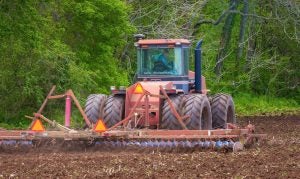Modern agriculture isn’t a stagnant mindset — farmers do lots of research and strive to make informed decisions
My family’s farm is uniquely situated. We’re a 15-minute drive to Lake Michigan. As you can imagine, we have a number of fields with rather sandy soil. But the land we farm stretches around several zip codes and encompasses a wide variety of areas. So, for example, our main farm actually has heavy, wet soil.
Each farm is different: different soil, different weather, and a different history. The choices we make for sandier soil might look a lot different than choices we make for heavier soil. Our approach varies from field to field. What works in one place may not work in every place.
Farms aren’t one size fits all.
Yet we don’t always acknowledge this fact. Sometimes we latch onto production practices that are generally really awesome. But we don’t account for the fact that it won’t work everywhere for every field. So farmers who don’t use that practice are somewhat ostracized.
Take no-till for example. We know it’s beneficial: healthier soil, reduced erosion, reduced runoff, carbon sequestration, and reduced labor and machinery wear. Those are all things farmers try to accomplish anyway. So no-till comes across as the magic answer that solves a bunch of problems. Why would anyone choose not to adopt no-till?
But that’s an overly-simplistic view. Yes, no-till is better under the right conditions. There are certainly times when no-till isn’t a viable option. When? Sometimes we have landlords that require us to do tillage; they don’t like the messy look of no-till. Sometimes the fields become rutted during harvest and they need to be smoothed off again. Sometimes crop residue in the field is too large and needs to be chopped smaller. And sometimes, although the exception, we can’t rotate crops and have no choice but to till each year.

My point isn’t to spark a debate over whether no-till is better or whether these problems could be avoided. Rather I’m trying to demonstrate that each crop, each field, and each farm involves a series of choices, circumstances, and decisions. Farmers are always making decisions over what’s best for their own farms. Sometimes that’s the trendiest production practices, and sometimes it isn’t.
Again, farms aren’t one size fits all.
We miss this point over and over again because we don’t appreciate that farmers are making management decisions on a regular basis. In our family, we work with agronomists. We meet with various input dealers. We discuss with seed consultants. We follow the dictates of landlords. We chose advanced features on machinery. We attend the extension office’s seminars. We’re always learning, evaluating, calculating, and making decisions.
Agriculture isn’t a monolithic group of people who just do what they’re told. That image harks back to the stereotypical farmer: too dumb to do anything else with his life. The same theme rears its head in today’s conspiracy theories — for example, that farmers only plant GMO crops because Monsanto makes them.
But that isn’t modern agriculture. Farmers make a lot of informed decisions. And we’re all experimenting to find what works and what doesn’t. Can the latest tillage technique work for us? Will the latest GMO solve a problem we have? Does this expensive machinery really make a difference? These are questions batted around my family’s home on a regular basis.
So let’s recognize that a production practice isn’t all bad or all good. Just because Farmer Larry adopts X doesn’t mean Farmer Tim is bad for not adopting it. As long as the decision is thoughtful and tailored to each farm’s unique circumstances, then it’s fine. Individual farmers need to choose for their own farms. We don’t need government/activists/companies/AgTwitter or whoever else making those localized decisions.
In other words, you do you.
Amanda Zaluckyj blogs under the name The Farmer’s Daughter USA. Her goal is to promote farmers and tackle the misinformation swirling around the U.S. food industry.



